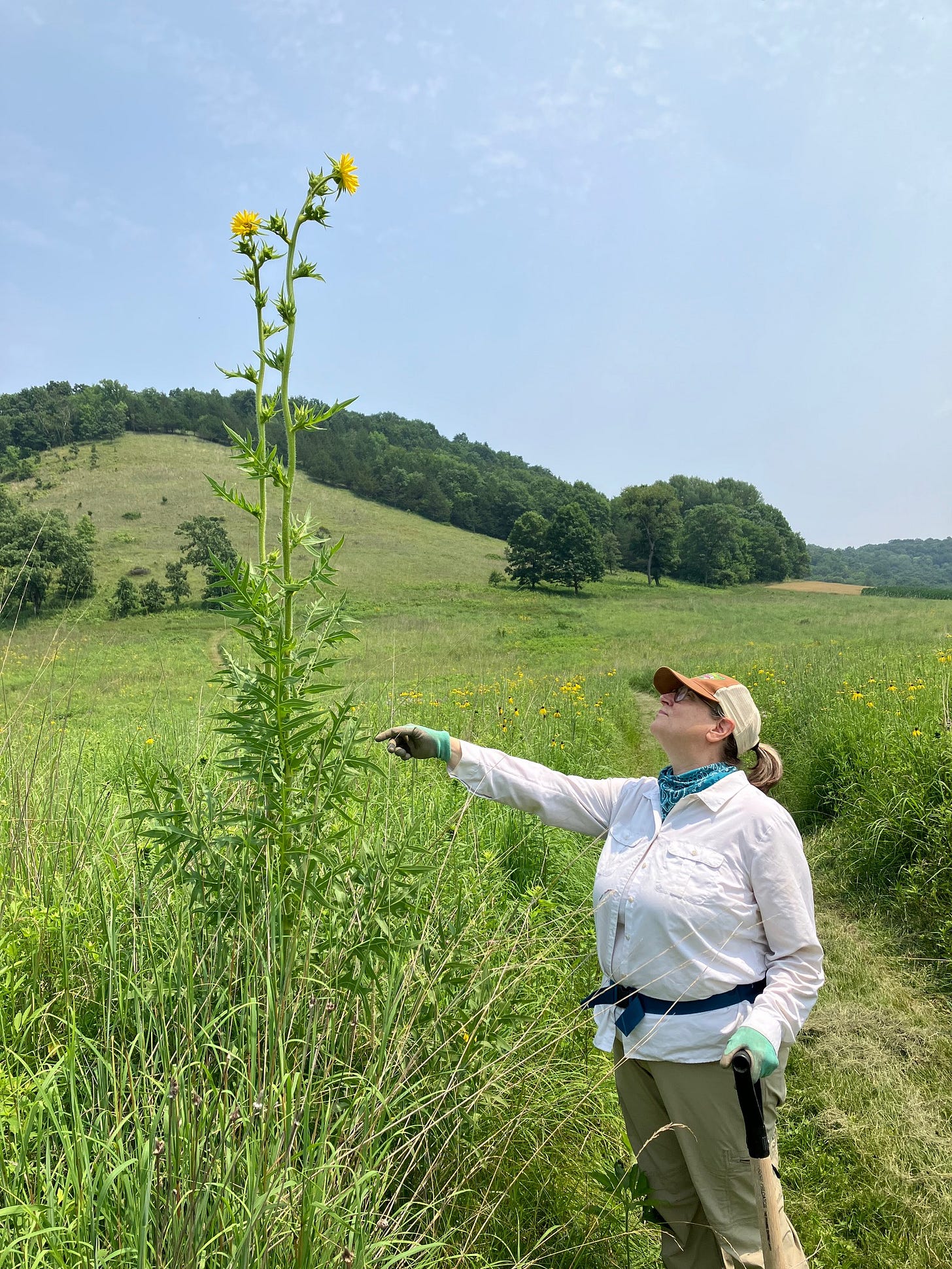I first came to known compass plant (Silphium laciniatum) back in the mid-aughts, when I was a graduate student studying forest ecosystem ecology, but had a side gig at a nature center with a restored prairie. Mostly I led tours of elementary and middle school kids on field trips or at summer camps, but also worked to define the criteria by which Girl Scouts could earn a forestry badge. The pay was $10 an hour, and when I wasn’t traveling to my field sites I would work 10 hours a week as a naturalist.
Pond invertebrates where a reliable hit, but beyond that fauna sightings were a gamble. I remember succumbing to kid pressure to grab and showcase a garter snake. I made the slowest possible attempt to pick it up, begrudgingly succeeding, and rewarded with the admiration of 11-year-old boys and snake musk. No thank you, on second thought.
Better was a repository of compelling plant tales. The Silphium genus delivers. Everyone loves a dramatized story about plants with sandpapery leaves and 8+ feet of height. And normally the plant stays in the same place you last saw it.
Compass plant, as I learned from a more experienced naturalist, got its name from the tendency to orient its broad, lobed leaves to face east/west. This helps with water conservation, as it prevents undue evapotranspiration during midday, when a south facing leaf would bear the brunt of the sun.
I am especially tickled now when I see the spread of compass plant in our prairie. When walking with visitors, it also aways warrants a pause, explanation, and invitation to check out the unusual leaf texture. First I noticed just the two specimens near the mow paths, but slowly there are more and more clusters on my radar. Each plant doesn’t put out its gigantic stalk every year, maybe more like every other. The birds love a high perch from which to survey the scene.
A couple of weeks ago, the teens leading guided tours at the Vore Buffalo Jump in Wyoming offered an alternative explanation for the plant’s common name: Native Americans strategically planted compass plants along routes because the tall flowering stalks could be seen at a distance to enable wayfinding. Given the plant’s 100 year lifespan, this seems a great prairie complement to the 90-degree tree bends of the forest.
Either way, I have to share the lament of Aldo Leopold when it comes to these statuesque plants with sunflower-y blooms (though I am still asking and hoping for an answer):
“What a thousand acres of Silphiums looked like when they tickled the bellies of the buffalo is a question never again to be answered, and perhaps not even asked."




